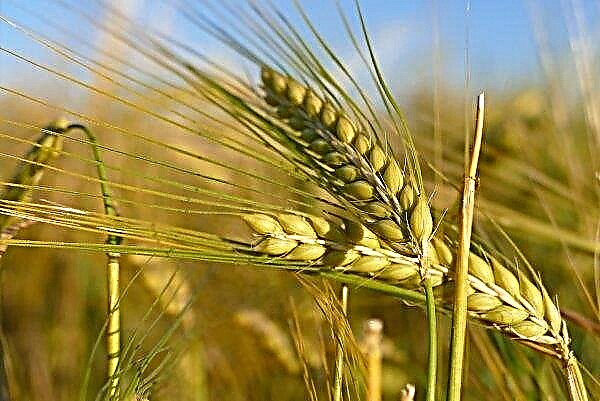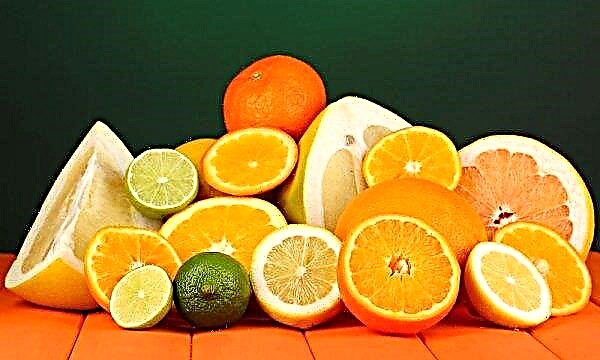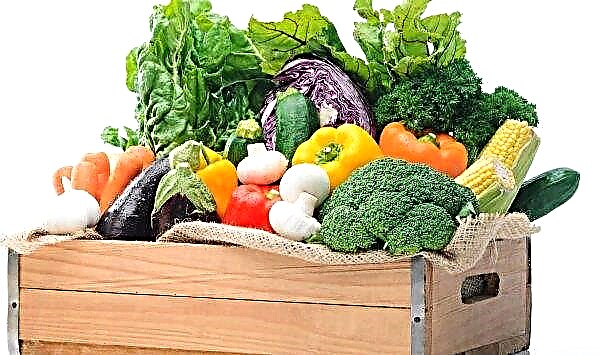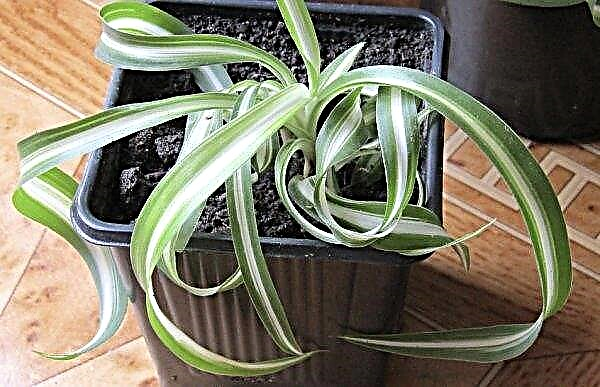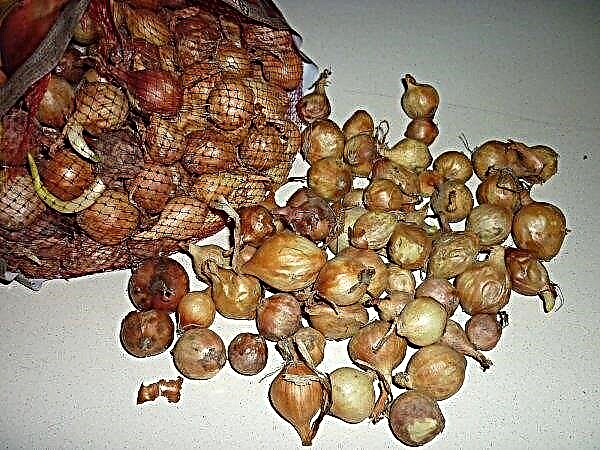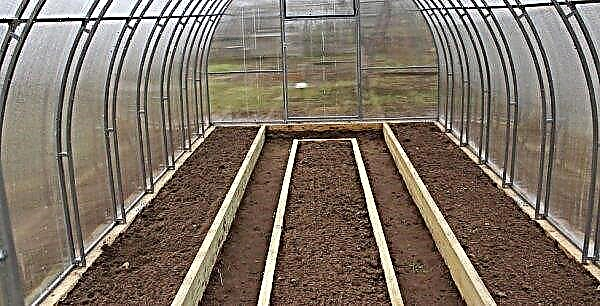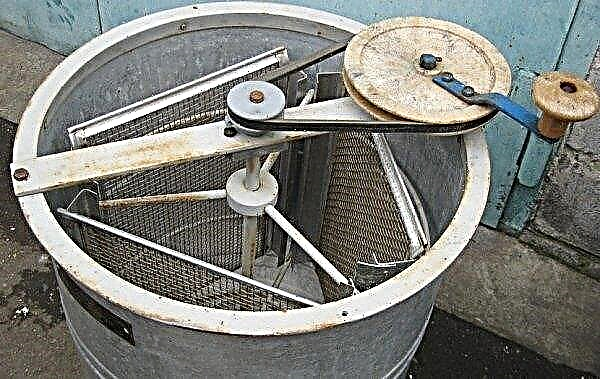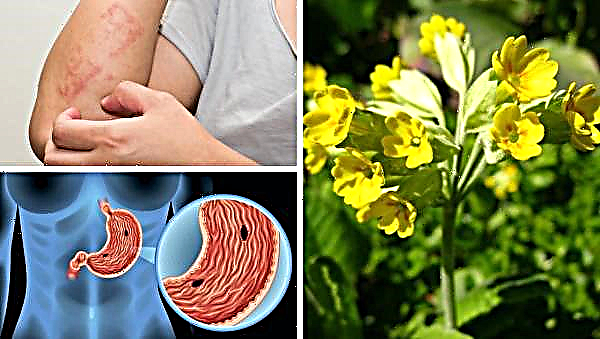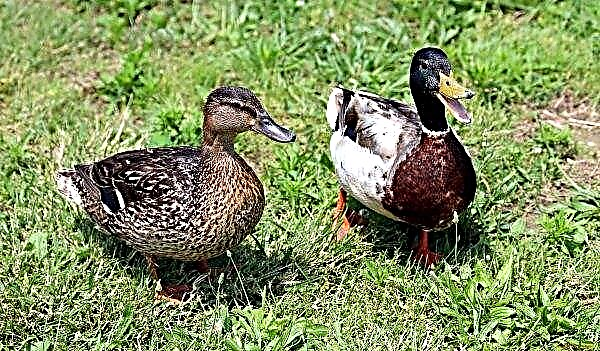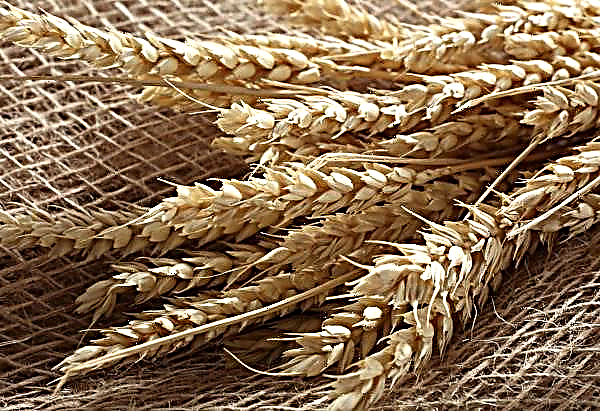Due to the growing demand for locally produced food and vegetables, the greenhouse industry is expanding rapidly. A controlled indoor environment can provide plants with the best growing conditions, and CO2 concentration has a positive effect on photosynthesis. The use of carbon dioxide generators for greenhouses will be discussed in our material.
Carbon dioxide generator for organizing plant photosynthesis in greenhouses
In hermetically sealed greenhouses, plants are provided with sufficient lighting, supplies of water and nutrients, but their pace of development is limited by the level of CO2 in the room air.

Carbon dioxide is necessary for plants in chemical reactions (photosynthesis) for the biosynthesis of carbohydrates as the basis of the nutritional and skeletal components of plant cells and tissues in order to ensure growth and development. Gas exchange during plant respiration occurs through small, adjustable openings called stomata.
 The stomata is located either on the upper or lower layer of the epidermis of the plant leaf.
The stomata is located either on the upper or lower layer of the epidermis of the plant leaf.
In the Earth’s atmosphere, the level of carbon dioxide is 250–450 ppm, and the need for various plant species is 700–800 ppm. In new greenhouse complexes with good sealing, the indoor CO2 level is 4 times less than in the outside air, and this negatively affects the growth and development of crops.
Moreover, with an increase in the duration and power of artificial lighting of the room, the need for plants in CO2 increases by 2-3 times. By saturating the greenhouse’s air with carbon dioxide, crop growth and yield increase by 20–40%.
Did you know? The ruins of greenhouses dating back to 79 AD e., were found during excavations of Pompeii. Modern greenhouses originated in the 13th century in Italy.
CO2 scheme in industrial greenhouses
The carbon dioxide supply system in commercial greenhouses includes a gas generator, a fan, a metering device, a gas analyzer and transport lines. Management is carried out using a computer.

Methods for producing CO2:
- technical CO2 from cylinders;
- methane burning;
- exhaust gas from heating plants;
- exhaust gas mini CHP.
Boiler House Gas
The most common method for enriching CO2 in a greenhouse is by burning fossil fuels. The flue gases used must not contain a hazardous amount of harmful components, so methane is most often the fuel for gas generators in greenhouses. When 1 m³ of methane is burned, approximately 1.8 kg of CO2 is produced.
Important! Measuring devices - gas analyzers, which constantly monitor the composition of the exhaust gases, make it possible to secure the room as much as possible.
When using flue waste from combustion, hot exhaust gases are captured and cleaned. After purification of the exhaust gas by catalytic neutralization using catalysts or scrubbers, the gas-air mixture is cooled in the heat exchanger to 50 ° C and fed through the gas main to the greenhouse in the form of fertilizer.

However, this method of supplying gas to fertilize plants can lead to air pollution of the greenhouse with harmful impurities of combustion products, because gas cleaning devices only clean gas waste by 50–75%. Consequently, the concentration of harmful substances in an enclosed greenhouse can exceed the maximum permissible norms for plants and humans.
The continuous mode of combustion of burners in heating boilers cannot be ensured due to the changing ambient temperature, therefore, the flow of gas waste is uneven. In addition, palladium catalysts and scrubbers are economically expensive and increase the consumable part in terms of the content of the greenhouse.
Distribution networks made of polyethylene sleeves
As a gas distribution system inside the greenhouse, a transport line of polyethylene pipes is used. At the gas sampling points above each bed, flexible polyethylene sleeves with a diameter of 50 mm with evenly spaced openings are attached to it. Sleeves are equal to the length of the beds and stretched along them or under the shelves. Condensation inside the system is eliminated by tilting the pipes.

CO2 is much heavier than air, so it is very important that the gas is vented from below. Air circulation using horizontal fans or a jet ventilation system ensures even distribution by moving large volumes of air in the greenhouse when the upper ventilation openings are closed or the exhaust fans are not working.
Supply system and gas supply options in small farm or home greenhouses
For private and small farms, there are simpler and less costly methods of supplying gas, taking into account the area of greenhouses, the type and number of crops grown.
Did you know? The use of gas combustion products to increase the level of CO2 in the air of greenhouses was proposed back in 1936 on the basis of successful experiments with vegetable crops by specialists of the Energy Institute and the Timiryazev Academy.
Gas generator
The gas generator for small rooms is based on obtaining the necessary carbon dioxide from atmospheric air. The productivity of such a device is 0.5 kg / h. The device is equipped with filters, which allows to obtain purified gas, and dispensers provide the flow of the required volumes. The microclimatic indicators of the greenhouse do not change.

Gas cylinders
Gas from cylinders is used for small areas with an injection of 8-10 kg / h for every 100 m². The cylinder must be equipped with a pressure regulator (pressure reducer) and an automatic valve to shut off the gas supply (solenoid) - these devices will protect the gas supply.

The capacity of 1 cylinder is 25 kg of gas. At significant costs, it is more rational to use isothermal tanks of various capacities for liquefied gas, which can be replenished if necessary.
Sensor and gas regulator
Gas supply must be monitored and regulated to ensure optimal balance and good growing conditions, to avoid costly overdose and to ensure the safety of people caring for crops and harvesting crops.
For monitoring and measuring the CO2 level in the greenhouse, sensors are usually used with a setpoint, for example, 800 ppm. When the sensor detects a low level, it activates the dosing system. When the required CO2 level is reached, the control system will turn off the CO2 supply.

Sensors and regulators can provide an alarm when exceeding the permissible concentration level and include an emergency ventilation system. Now on the market are popular infrared CO2 sensors, designed on the principle of a double infrared beam.
PVC hoses and pipes for CO2 supply
The issue of gas supply to the room is not difficult, and everyone decides it independently. Typically, the distribution system consists of a gas pipeline consisting of pipes (PVC or polypropylene), small perforated plastic sleeves (50 mm) and connected sensors and a climate controller.
Directly to the plants, gas enters through openings in the arms. Sleeves for a rope can be hung at any level - on beds for fertilizing the root system, on racks and trellises for feeding to leaves and growth points.
This makes it possible to accurately and economically meter the gas at almost 100% concentration during the day to the desired growing area. Feed rates are regulated depending on climatic indicators and daily and seasonal dynamics of photosynthesis.
Biological sources
Check out

If there are animals on the farm, then by arranging the greenhouse through the wall from the barn and equipping both rooms with supply and exhaust ventilation, it is possible to organize the provision of carbon dioxide from the respiration of animals, which, in turn, will receive oxygen from the plants.
Moreover, the balance and volumes of gases, as well as regulation will have to be determined empirically. The same CO2 delivery method can be provided from breweries and distilleries.
Carbon dioxide for manure cucumbers
Manure and other organic substances not only provide plants with nutrients, but also emit carbon dioxide during fermentation, the amount of which can improve the growth of vegetable crops. This creates favorable conditions for air supply of both the root system and the aerial parts of plants.
 Manure should be diluted with water in a ratio of 1: 3.
Manure should be diluted with water in a ratio of 1: 3.
A good example is the story that happened at the turn of the nineteenth and twentieth centuries in the Timiryazev Academy, where for several years they tried to grow cucumbers in greenhouses, but, despite the scientific approach, they did not succeed. Then the scientists decided to turn to Klina gardeners, who grow enviable crops of cucumbers in their greenhouses.
They invited a gardener from Klin and offered to grow cucumbers for themselves in the Academy's greenhouse, but let him use his technology in the future. The trick was that tanks with diluted manure were installed inside the room, and the carbon dioxide emitted during fermentation fertilized the cucumber plants.
It was experimentally found that with continuous fertilizer with carbon dioxide during the daytime, a maximum (54%) increase in the weight of cucumbers is achieved.
Alcohol fermentation
Alcoholic fermentation, as well as microbiological decomposition, is a method of producing carbon dioxide. By placing cans with fermented wort among the plants, it is possible to saturate the air with carbon dioxide. For fermentation, use water, sugar and yeast or carrion, and unsuitable fruits and berries, and grain (wheat, rye).
 Another way is to apply nettle fermentation.
Another way is to apply nettle fermentation.
To do this, fill the container with a third of grass (fresh or dried) and fill it with water. Fermentation lasts two weeks. The mixture is stirred daily to release CO2. To eliminate an unpleasant odor, you can add valerian (1-2 branches) to the mixture or sprinkle dust on top.
The fermented mixture is used as liquid bait. To regulate the flow, special caps (CO2Pro) are used, which are easily screwed onto standard plastic bottles.
Important! Fermentation odors can be reduced if you put containers with a must on a water lock, as is done in the production of wine at home.
Drinking sparkling water as a source of carbon dioxide
A regular bottle of sparkling water is an affordable, albeit ineffective, source of carbon dioxide. About 6–8 g of carbon dioxide is dissolved in 1 liter of carbonated water, depending on the degree of gas content.
The method does not allow you to accurately determine the gas concentration and calculate the optimal dosage, so it can be considered as an emergency measure to increase the level of CO2 in small volumes of the room. Another way to use sparkling water as a fertilizer is to saturate carbon dioxide from water cylinders for irrigation.
Natural sources of carbon dioxide: air and soil
If the greenhouse is not equipped with a CO2 supply system, then atmospheric air is a natural source of CO2 for plants with regular ventilation of the room and open transoms. But this provides only a third of the daily requirement.
Check out

Another low-tech method for adding CO2 is composting plant material and organics in a greenhouse, which leads not only to enrichment of the soil with macro- and microelements, but also to replenishment of CO2 (up to 20 kg / h from 1 ha).
The composting process produces carbon dioxide, but harmful gases are also released, and conditions for the multiplication of pathogens and insects are created. The concentration of CO2 generated in this way is difficult to control and the method is unreliable.
Do-it-yourself carbon dioxide system and generator for greenhouses: justified or not
The feasibility of manufacturing a gas generator should be independently assessed based on its financial and material capabilities and labor costs.
In addition to installing a gas generator in the form of a boiler with a large heat release, you will need a system for delivering gas to the premises of the greenhouse (gas pipeline), measuring and control equipment. Thus, it is possible to make a system on its own, but to evaluate its rationality for small greenhouse areas is possible only with the help of mathematical calculations.
It is much simpler and cheaper to study alternative sources of carbon dioxide and how to use them in closed ground conditions. For example, a liquefied gas system costs about 2 million rubles, and if you use gas from cylinders, the cost is reduced by 10 times.
Important! A high concentration of carbon dioxide is toxic to living organisms, so raising the level to 10,000 ppm (1%) and higher within a few hours will eliminate pests (whitefly, spider mite) in the greenhouse.
Basic rules of submission
The dosage and time periods of saturation of air in the greenhouse CO2 depend on the season and time of day, the degree of sealing of the room, the intensity of illumination and the type of crops grown.
Lighting
As a result of photosynthesis, plants receive carbohydrates for growth and development, processing carbon dioxide and water with the help of light energy. These 3 components are important for the mechanism of stomata opening on the leaf surface and the beginning of gas exchange between plants and the environment. Under intense light, plants more actively consume CO2, and the rate of photosynthesis increases.
The CO2 concentration in the room must be maintained at 600–800 ppm. With intense lighting, the temperature in the greenhouse rises, and you have to open transoms for ventilation, so the concentration is increased to 1000-1500 ppm.
The consumption of CO2 in sunlight is about 250 kg / ha per daylight hours with closed windows. With open windows and windy weather - 500-1000 kg / ha. In winter, gas fertilizer rates are reduced to 600 ppm, as artificial light helps accelerate photosynthesis.
Feed time
CO2 supplementation is most effective during the period of active growth of the plant during the bright period. CO2 generation should start in the morning two hours after the start of lighting and until the desired concentration level is reached (1 hour). Then the generator should be turned off. CO2 levels will return to the environment before dark.
Important! An increase in CO2 occurs only in a hermetically sealed greenhouse, since infiltration of the outside atmosphere will dilute the concentration of carbon dioxide in the room.
The second supplement should be carried out 2 hours before the end of daylight and the plants go to sleep - the resulting carbon dioxide will be effectively absorbed and processed at night.
Determination of carbon dioxide consumption for each crop separately
Crops such as eggplant, cucumbers, tomatoes, peppers, lettuce and others are now regularly grown in modern greenhouses, where light, water, temperature, nutrients are controlled and carbon dioxide levels are regulated to create conditions that optimally promote growth.
An increase in concentration from 400 to 1000 ppm can stimulate the photosynthesis rate of plants and leads to an increase in yield by 21–61% for flowers and vegetables. In addition, carbon dioxide fertilization gives earlier yields (by 7-12 days) and improves the ability of plants to resist diseases and pests.
For indoor use, the following CO2 levels in the air (1000 ppm = 0.1%) are recommended:
- cucumbers, tomatoes - 0.2–0.3%;
- pumpkin, beans - 0.3%;
- radish, lettuce - 0.2-0.25%;
- cabbage, carrots - 0.2-0.3%.
Different plants have different CO2 requirements, and this also needs to be taken into account.
According to the results of studies, vegetable crops showed such characteristics when fertilizing with carbon dioxide:
| Cucumbers | increase in yield and fruit quality by 25–30% at 1500–2000 ppm |
| Tomatoes | yield 30% higher, ripening 2 weeks earlier at 1000 ppm |
| Eggplant | 35% more yield, 2 weeks earlier ripening at 1000–1500 ppm |
| Cabbage | 40% more yield at 800–1000 ppm |
| Strawberry | yield 40% higher, ripening 2 weeks earlier, berries are sweeter at 1000-1500 ppm |
| Salad | yield 30–40% higher, early ripening at 1000–1500 ppm |
| Asparagus | 30% increase in yield, 2 weeks earlier ripening at 800–1200 ppm |
| Melon | 70% higher yield, improved fruit quality at 800–1000 ppm |
Flower crops (dieffenbachia, roses and chrysanthemums) showed early flowering at 1000 ppm and increased its quality by 20%. For cereals, raising CO2 to 600 ppm increases the yield of rice, wheat, soybeans by 13%, and corn by 20%.
When growing mushrooms, it should be borne in mind that carbon dioxide inhibits the development of mycelium, so the room must be ventilated to reduce its concentration.
Important! Excessive CO2 levels (5000 ppm) can cause dizziness or lack of coordination in people. In plants, the processes of respiratory metabolism are disturbed, growth and development slows down, necrosis of leaves and buds appears (they do not fully open).
Having appreciated the importance of photosynthesis in plant physiology and become familiar with carbon dioxide production methods, you can correctly and timely provide greenhouse crops with carbon dioxide and obtain high and high-quality crops.

